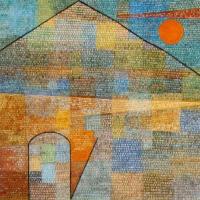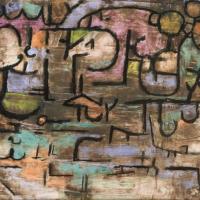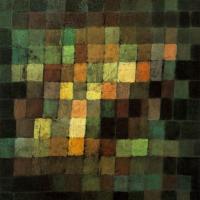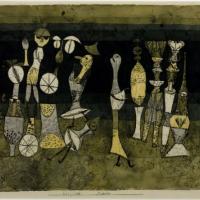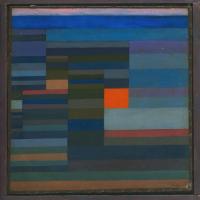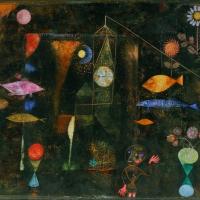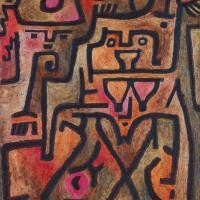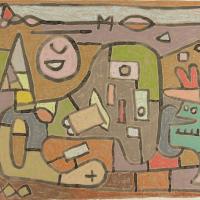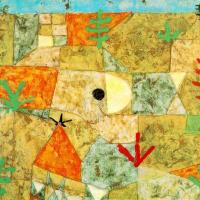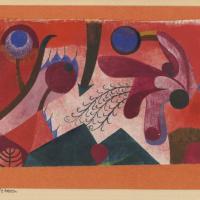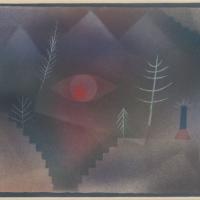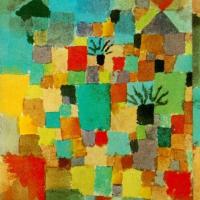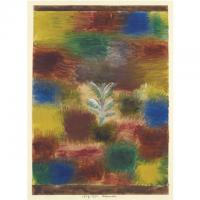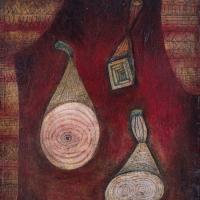Paul Klee
A Woman For Gods
$450.00
Ad Parnassum
$450.00
After The Floods
$450.00
Ancient Sounds
$510.00
Children And Dog
$510.00
Comedy
$450.00
Cupulas Rojas Y Blancas
$510.00
Das Haus In Der Hohe
$450.00
Diana
$450.00
Equals Infinity
$450.00
Fire In The Evening
$510.00
Fish Magic
$450.00
Forest Witches
$450.00
Fun On The Inland Lake
$450.00
Giardino Meridionale
$450.00
Glance Of A Landscape
$450.00
Hardy Plants
$450.00
Jardines Tunecinos
$450.00
Little Tree Amid Shrubbery
$450.00
Maibild
$450.00
Omega 5 (Traps)
$450.00
Paul Klee
Paul Klee (1879-1940)
Paul Klee (18 December 1879 – 29 June 1940) was a Swiss-born artist. His highly individual style was influenced by movements in art that included Expressionism, Cubism, and Surrealism. Klee was a natural draftsman who experimented with and eventually deeply explored color theory, writing about it extensively; his lectures Writings on Form and Design Theory (Schriften zur Form und Gestaltungslehre), published in English as the Paul Klee Notebooks, are held to be as important for modern art as Leonardo da Vinci's A Treatise on Painting for the Renaissance. He and his colleague, Russian painter Wassily Kandinsky, both taught at the Bauhaus school of art, design and architecture. His works reflect his dry humor and his sometimes childlike perspective, his personal moods and beliefs, and his musicality.
In his early years, following his parents’ wishes, Klee focused on becoming a musician; but he decided on the visual arts During his teen years, partly out of rebellion and partly because modern music lacked meaning for him. He stated, "I didn't find the idea of going in for music creatively particularly attractive in view of the decline in the history of musical achievement." As a musician, he played and felt emotionally bound to traditional works of the eighteenth and nineteenth century, but as an artist he craved the freedom to explore radical ideas and styles. At sixteen, Klee’s landscape drawings already show considerable skill.
With his parents' reluctant permission, in 1898 Klee began studying art at the Academy of Fine Arts in Munich with Heinrich Knirrand Franz von Stuck. He excelled at drawing but seemed to lack any natural color sense. He later recalled, "During the third winter I even realized that I probably would never learn to paint." During these times of youthful adventure, Klee spent much time in pubs and had affairs with lower class women and artists' models. He had an illegitimate son in 1900 who died several weeks after birth.
After receiving his Fine Arts degree, Klee went to Italy from October 1901 to May 1902 with friend Hermann Haller. They stayed in Rome, Florence, and Naples, and studied the master painters of past centuries. He exclaimed, "The Forum and the Vatican have spoken to me. Humanism wants to suffocate me." He responded to the colors of Italy, but sadly noted, "that a long struggle lies in store for me in this field of color." For Klee, color represented the optimism and nobility in art, and a hope for relief from the pessimistic nature he expressed in his black-and-white grotesques and satires. Returning to Bern, he lived with his parents for several years, and took occasional art classes. By 1905, he was developing some experimental techniques, including drawing with a needle on a blackened pane of glass, resulting in fifty-seven works including his Portrait of My Father(1906). In the years 1903–05 he also completed a cycle of eleven zinc-plate etchings called Inventions, his first exhibited works, in which he illustrated several grotesque characters. He commented, "though I'm fairly satisfied with my etchings I can't go on like this. I’m not a specialist." Klee was still dividing his time with music, playing the violin in an orchestra and writing concert and theater reviews.
Klee was at the peak of his creative output. His Ad Parnassum (1932) is considered his masterpiece and the best example of his pointillist style; it is also one of his largest, most finely worked paintings. He produced nearly 500 works in 1933 during his last year in Germany. However, in 1933, Klee began experiencing the symptoms of what was diagnosed as scleroderma after his death. The progression of his fatal disease, which made swallowing very difficult, can be followed through the art he created in his last years. His output in 1936 was only 25 pictures. In the later 1930s, his health recovered somewhat and he was encouraged by a visit from Kandinsky and Picasso. Klee's simpler and larger designs enabled him to keep up his output in his final years, and in 1939 he created over 1,200 works, a career high for one year. He used heavier lines and mainly geometric forms with fewer but larger blocks of color. His varied color palettes, some with bright colors and others somber, perhaps reflected his alternating moods of optimism and pessimism. Back in Germany in 1937, seventeen of Klee's pictures were included in an exhibition of "Degenerate art" and 102 of his works in public collections were seized by the Nazis.
Klee suffered from a wasting disease, scleroderma, toward the end of his life, enduring pain that seems to be reflected in his last works of art. One of his last paintings, Death and Fire, features a skull in the center with the German word for death, "Tod", appearing in the face. He died in Muralto, Locarno, Switzerland, on 29 June 1940 without having obtained Swiss citizenship, despite his birth in that country. His art work was considered too revolutionary, even degenerate, by the Swiss authorities, but eventually they accepted his request six days after his death. His legacy comprises about 9,000 works of art. The words on his tombstone, Klee's credo, placed there by his son Felix, say, "I cannot be grasped in the here and now, For my dwelling place is as much among the dead, As the yet unborn, Slightly closer to the heart of creation than usual, But still not close enough." He was buried at Schosshaldenfriedhof, Bern, Switzerland.
Since 1995, the "Paul Klee-Archiv" (Paul Klee archive) of the University of Jena houses an extensive collection of works by Klee. It is located within the art history department, established by Franz-Joachim Verspohl. It encompasses the private library of book collector Rolf Sauerwein which contains nearly 700 works from 30 years composed of monographs about Klee, exhibition catalogues, extensive secondary literature as well as originally illustrated issues, a postcard and a signed photography portrait of Klee.
Architect Renzo Piano constructed the Zentrum Paul Klee in June 2005. Located in Bern, the museum exhibits about 150 (of 4000 Klee works overall) in a six-month rotation, as it is impossible to show all of his works at once. Furthermore, his pictures require rest periods; they contain relatively photosensitive colors, inks and papers, which may bleach, change, turn brown and become brittle if exposed to light for too long. The San Francisco Museum of Modern Art has a comprehensive Klee collection, donated by Carl Djerassi. Other exhibitions include the Sammlung Rosengart in Luzern, the Albertina in Wien and the Berggruen Museum in Berlin. Schools in Gersthofen, Lübeck; Klein-Winternheim, Overath; his place of birth Münchenbuchseeand Düsseldorf bear his name.
In 2018, a Google Doodle was created to celebrate his 139th birthday.



